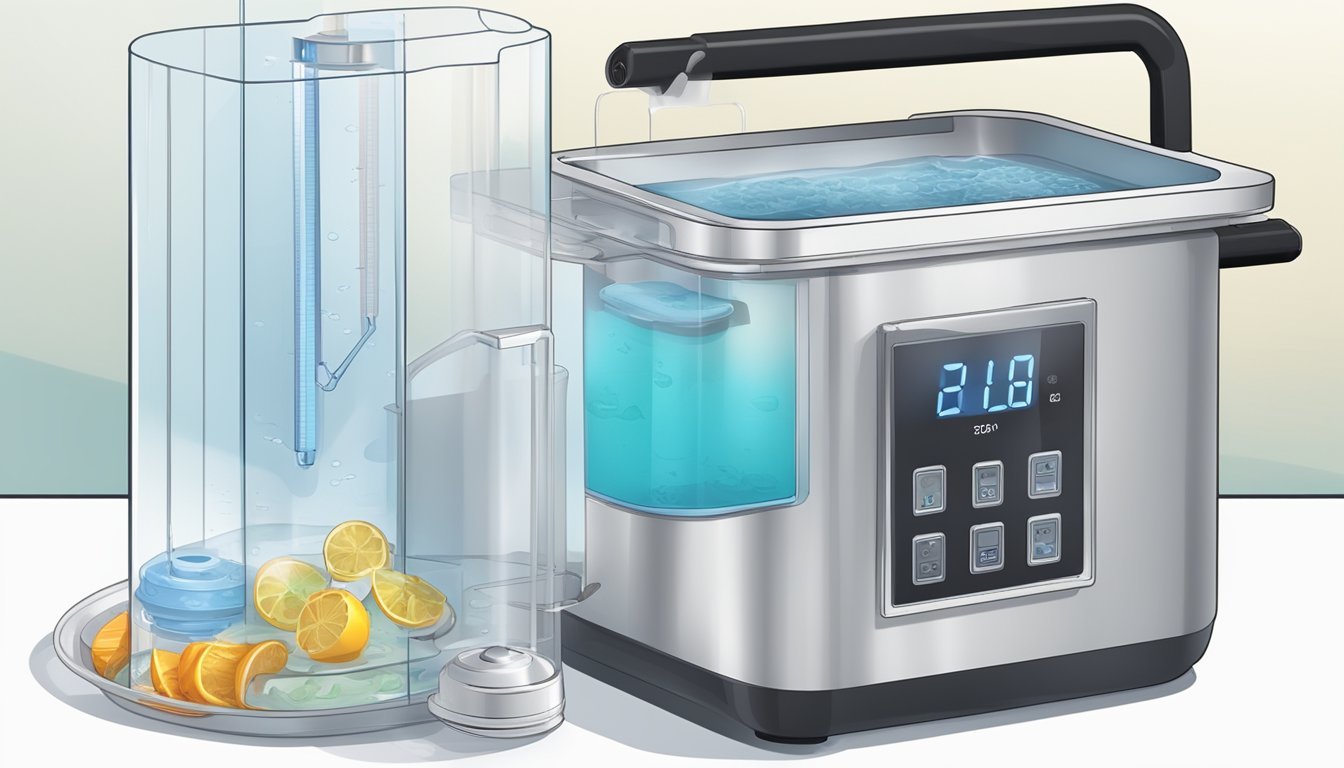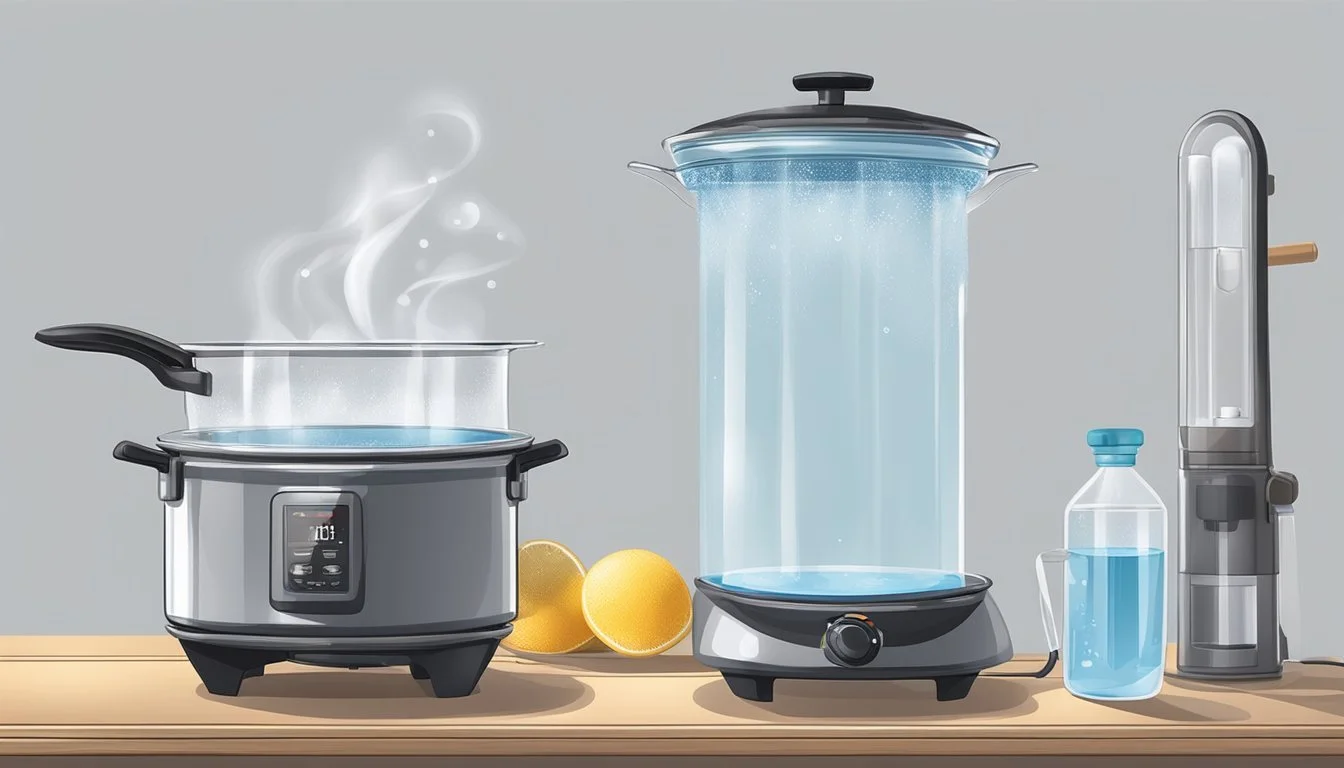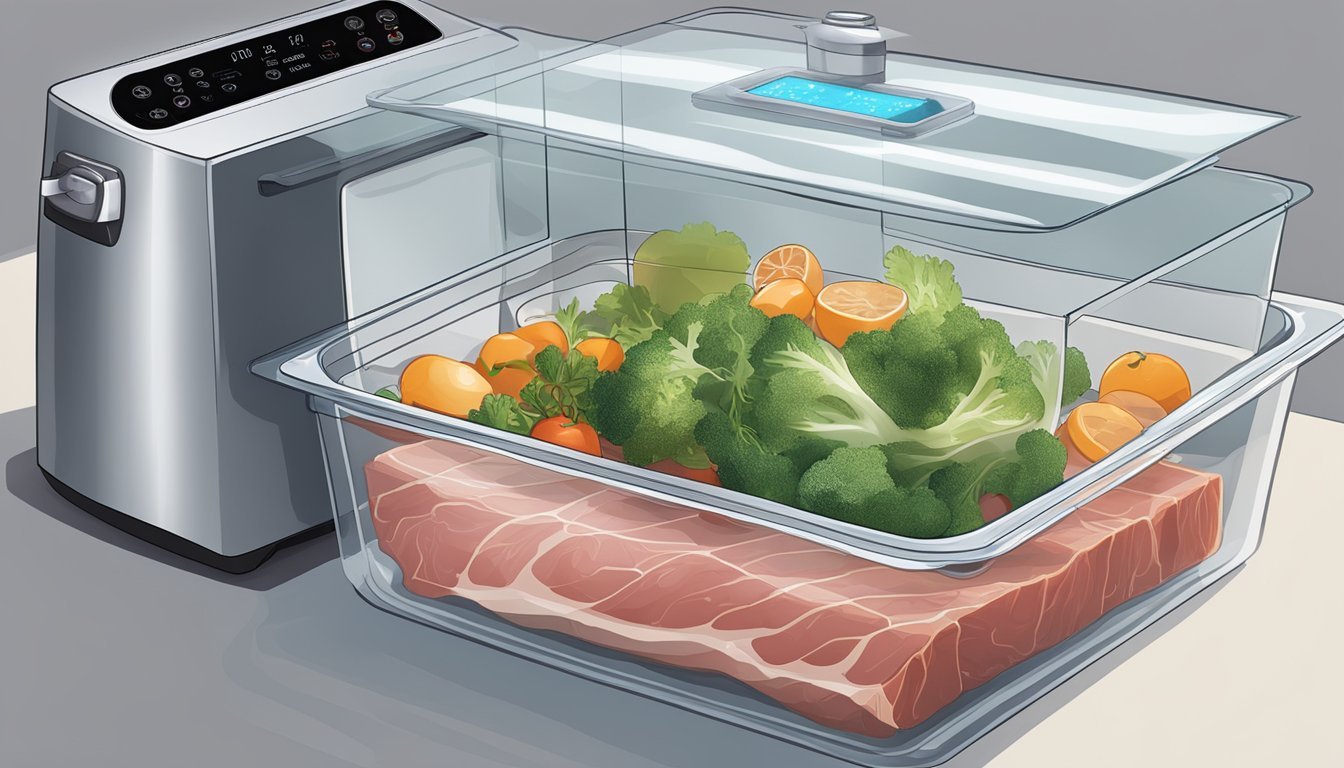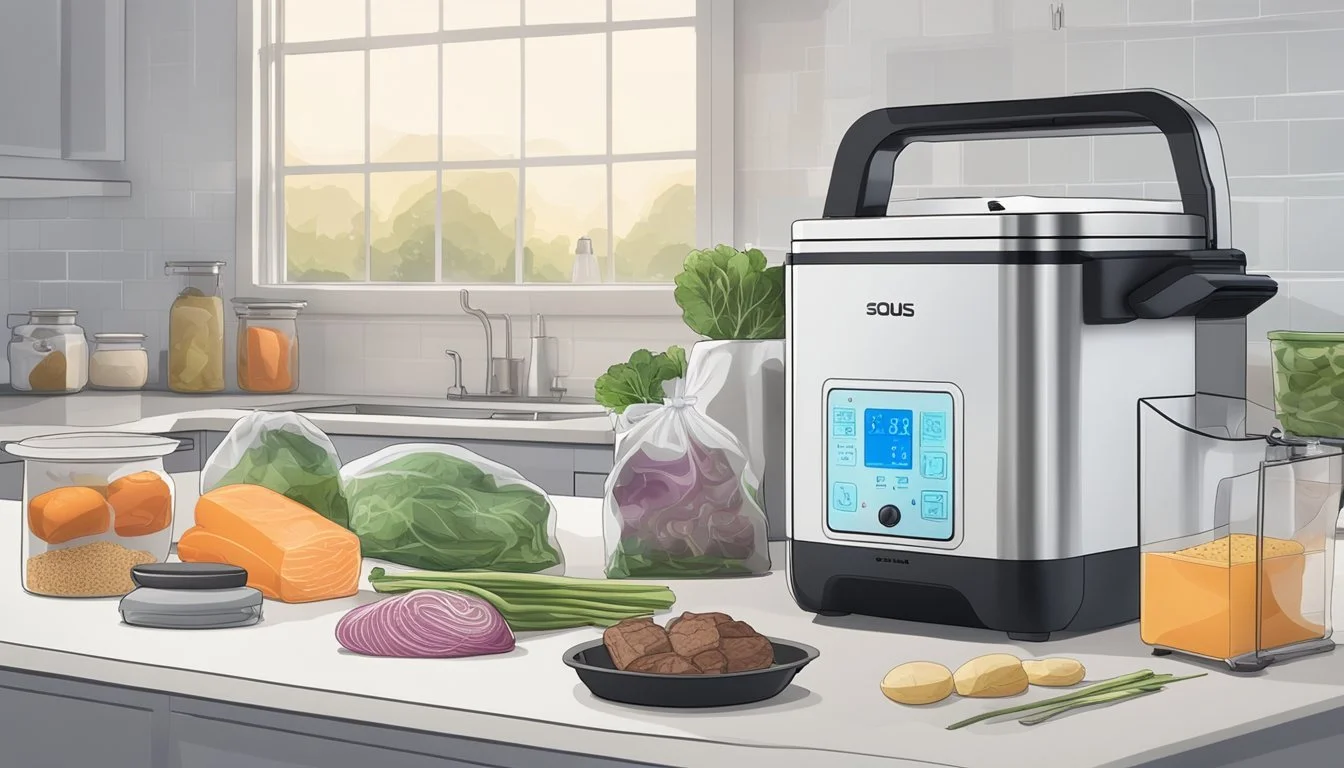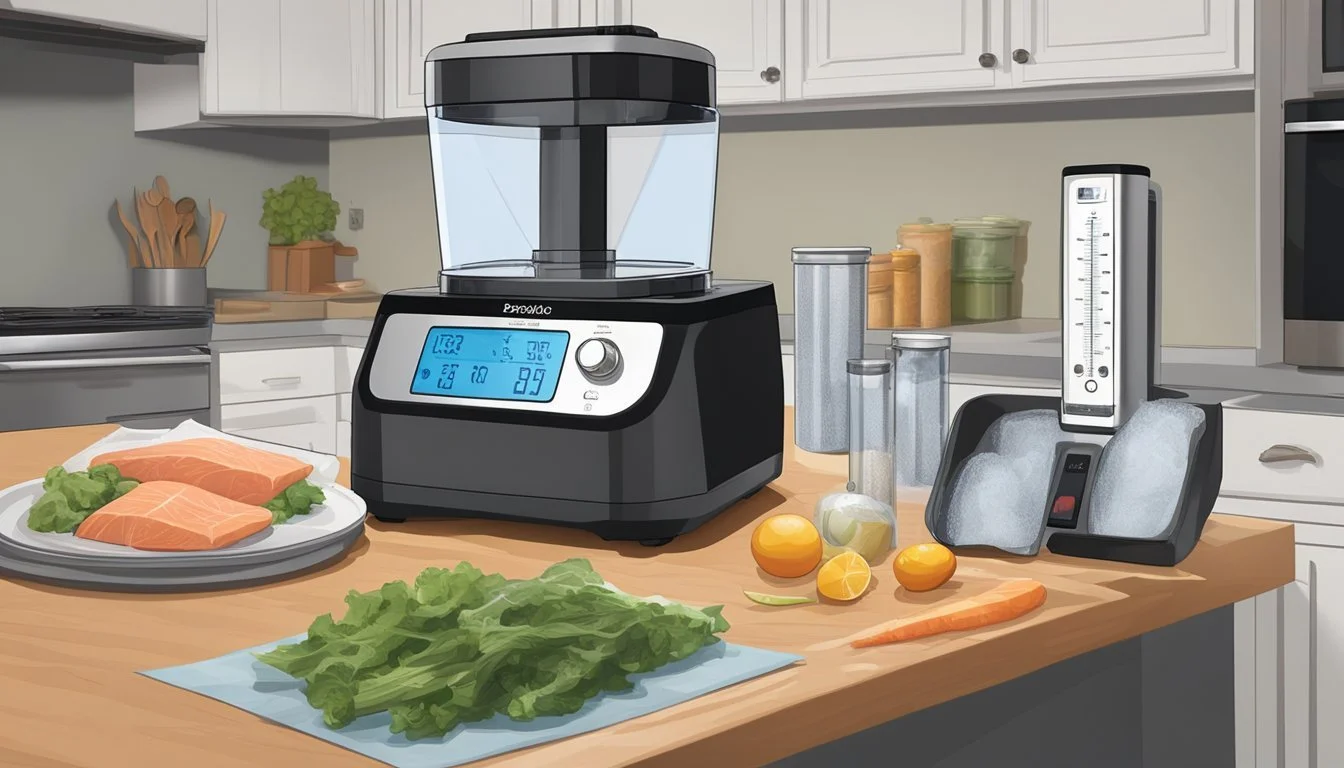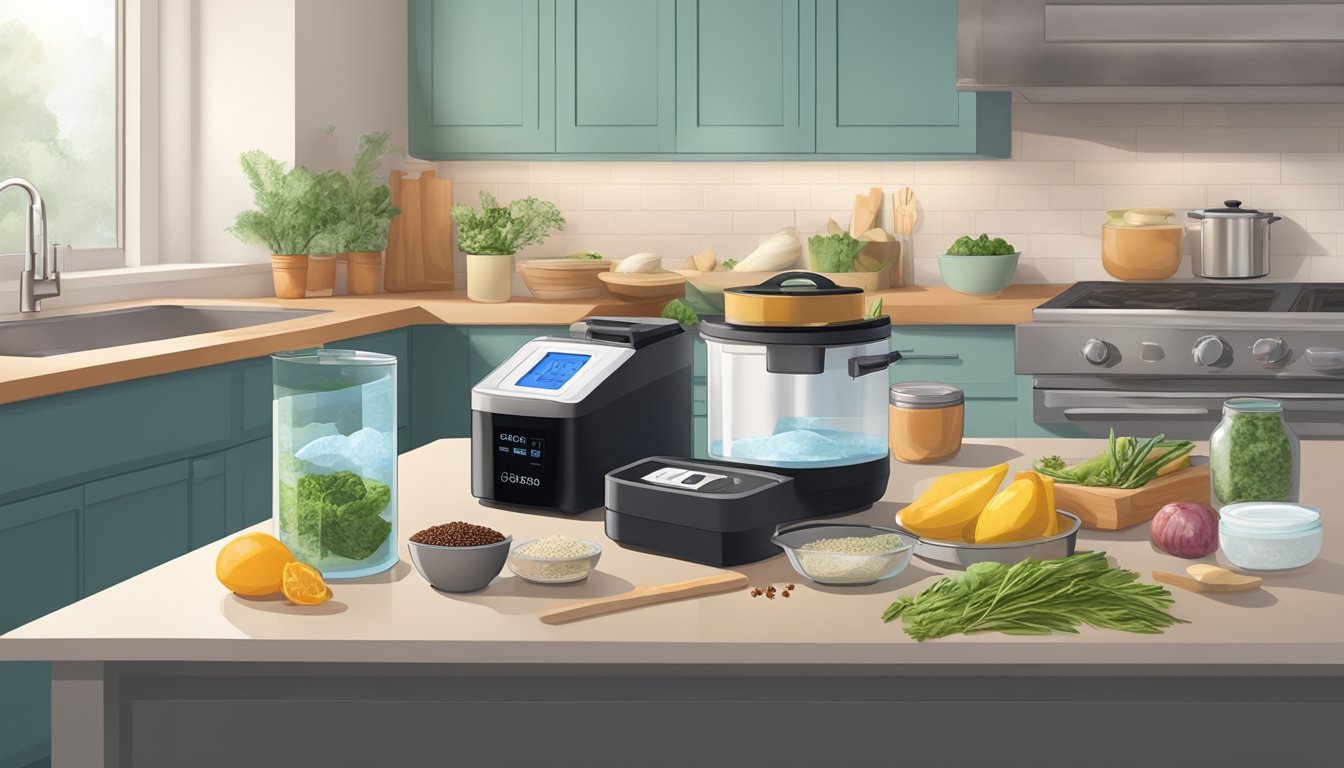How to Master the Art of Sous Vide Cooking Without Fancy Equipment
Simple Techniques for Home Chefs
Sous vide cooking, a technique that involves slow cooking food in a water bath at a precise temperature, is hailed for its ability to produce consistently delicious results. Traditionally, this method requires specialized equipment, such as an immersion circulator and vacuum sealing bags. However, it is entirely possible to enjoy the benefits of sous vide cooking without these tools. By leveraging alternative methods, culinary enthusiasts can achieve the tenderness and flavor that sous vide is famous for, with tools they already have in their kitchen.
Adapting sous vide techniques at home starts with understanding the principles behind the method. The goal is to maintain a steady water temperature that cooks food evenly throughout and for a period that suits the type of food being prepared. Using a heavy-bottomed pot, a reliable thermometer, and simple household items to securely encase the food, individuals can simulate the sous vide environment. Maintaining the water temperature manually may require more attention than using an immersion circulator, but with patience, the results can be equally rewarding.
Embracing this low-tech approach opens the door to a world of culinary precision that might otherwise seem inaccessible. Home cooks can take advantage of the slow, controlled cooking process to create tender cuts of meat, such as steak cooked to a perfect medium-rare, or vegetables that maintain their vibrant color and nutrients. Mastery of this improvised sous vide method can elevate home-cooked meals (how long do cooked meals last?) to gourmet standards, all while using the pots, clips, and thermometers that reside in most kitchens.
Understanding Sous Vide Cooking
Sous vide cooking harnesses the power of precise temperature control to achieve consistent results. This section will demystify what sous vide involves, explore its benefits, and dispel common misconceptions.
Defining Sous Vide
Sous vide is a cooking method where food is vacuum-sealed in a bag and cooked in a water bath at a specific temperature. This technique ensures that foods are cooked evenly and to the desired level of doneness, without the risk of overcooking. By maintaining a consistent temperature, sous vide allows for unparalleled control over the cooking process.
Benefits of Sous Vide Cooking
The benefits of using sous vide include:
Precise Temperature Control: Achieving and maintaining an exact cooking temperature is crucial for consistent results. Sous vide excels at this.
Consistent Results: With sous vide, every portion of the food reaches the same temperature, ensuring uniformity in texture and doneness.
Enhanced Flavors: Because the food is sealed, flavors are locked in, often resulting in more intense taste experiences.
Common Sous Vide Misconceptions
There are several misconceptions about sous vide cooking that may deter newcomers:
Complexity: It's often assumed that sous vide is complicated and requires professional expertise. In reality, beginners can achieve high-quality results with minimal training.
Specialized Equipment Requirement: While dedicated sous vide machines exist, one can also use a simple pot combined with a thermometer to maintain the necessary water bath temperature.
Equipment Alternatives
Mastering sous vide without dedicated equipment relies on improvising with commonplace kitchen items. It’s essential to maintain temperature control and ensure a suitable cooking environment.
The Essentials for DIY Sous Vide
For a do-it-yourself approach to sous vide, one needs a large pot capable of holding a sufficient water volume to completely submerge the food. Additionally, resealable plastic bags or Ziploc bags act as a makeshift vacuum environment to encase the food item, with binder clips serving to secure the bags to the side of the pot to prevent floating.
Substitutes for a Sous Vide Machine
While an immersion circulator is the hallmark of sous vide machines, one can simulate its function using a stove top for heat and manually stirring the water to circulate it. Alternatively, adding hot water periodically can help maintain the desired temperature. A cooler can also serve as an insulated container if a stove-top pot isn’t viable.
DIY Temperature Monitoring
A key aspect of sous vide is precise temperature control. Regular kitchen thermometers, especially a digital thermometer, offer a close approximation to the controls provided by a sous vide machine. If the thermometer isn't designed to stay in the pot, one may affix it using a binder clip or a makeshift holder to monitor the water temperature continuously.
Preparation for Sous Vide Without a Machine
Embarking on sous vide cooking without the luxury of specialized equipment requires innovative approaches to vacuum-sealing, preparing a consistent water bath, and efficient preheating techniques.
Vacuum-Sealing Techniques Without a Sealer
One doesn't need a vacuum sealer to prepare food for sous vide cooking. A reliable alternative is the water displacement method using a plastic freezer bag. To achieve a vacuum-seal effect, submerge the zip-top bag in water, allowing the pressure to force air out before sealing. Alternatively, one can use glass jars with lids tightened just enough to allow air to escape during submersion, ensuring a seal forms as the air exits.
Preparing Your Water Bath
Properly preparing a water bath on a stove or within an oven is critical for consistent sous vide cooking. Begin by filling a large pot of water, being careful not to overfill to prevent overflow when food is added. Preheating the water to the desired temperature can be achieved using a kitchen thermometer to monitor closely—135°F to 140°F is a common range for medium-rare steak.
Preheating Strategies
Before adding food, ensure the water bath is preheated to the target temperature. If using a stove, adjust the burner to maintain a stable temperature. In case of temperature fluctuations, especially after introducing food to the bath, allow the water to return to the desired temperature before setting a timer. Preheating an oven involves setting it to a specific temperature and allowing adequate time for the water in the pot to reach equilibrium with the oven's environment.
Cooking Process
In the art of sous vide without specialized equipment, careful management of water temperature and cooking time is crucial to achieving desired doneness.
Managing the Water Bath Temperature
Sous vide cooking requires maintaining a precise and consistent water bath temperature. Without a dedicated sous vide machine, one can use a digital thermometer to monitor the water temperature continuously. When adding food, especially if it's cold or frozen, the cook should expect a drop in temperature and adjust the heat source accordingly to bring the water back to the specific temperature.
Essential Temperatures to Remember:
Steak (medium-rare): 136°F
Chicken (cooked through): 165°F
Cooking Time and Temperature Guidelines
Different foods require specific temperatures and cooking times to reach the proper doneness. For a medium-rare steak, a temperature of 136°F should be maintained for 1 to 3 hours. However, times can differ based on thickness and personal preference. A comprehensive time and temperature chart is a valuable reference during the cooking process.
Example Cooking Times:
1-inch thick steak (medium-rare): 1 - 3 hours at 136°F
Chicken breasts: 1 - 2 hours at 165°F
Monitoring Doneness
To monitor doneness, one can use the feel of the food through the bag or a digital thermometer to check internal temperatures. Sous vide allows for a wide window of time where food remains at the perfect level of doneness, which reduces the risk of overcooking. However, pasteurization and safety must still be considered, especially with poultry and pork.
Key Temperature Points for Safety:
Poultry: 165°F to ensure safe consumption.
Pork: 145°F for safe consumption with a 3-minute rest time.
Finishing Techniques
After sous vide cooking, finishing techniques are crucial for achieving the ideal texture and flavor. They transform the evenly cooked interior into a meal with a delicious contrast between the surface and the center.
Post-Sous Vide Searing
Searing is the process of applying intense, direct heat to create a flavorful, caramelized crust on the exterior of sous vide-cooked foods. To sear effectively:
Preheat a skillet on high heat until it's very hot. A cast-iron skillet is preferred for its heat retention.
Dry the food with paper towels to ensure proper browning.
Use high-smoke-point oils (like refined avocado oil) for searing to avoid smoking out the kitchen.
Sear the food using tongs for even handling, typically for 1 minute per side.
Avoid overcooking by keeping the sear short and intense.
Seasoning After Sous Vide Cooking
Proper seasoning adds depth and brings out the flavors in sous vide-cooked food. For best results:
Season generously with salt and pepper or other spices before searing.
Enhance flavors by finishing with high-quality olive oil or fresh herbs after searing.
Balance the dish's flavor profile with acidity, such as a squeeze of lemon, if needed.
By focusing on these finishing steps, the cook ensures a delicious result that showcases the precision cooking of sous vide, complemented by the pleasing textures and flavors that only proper finishing can provide.
Safety and Quality Assurance
Mastering sous vide cooking revolves around maintaining precise temperature control and food safety, to ensure meals are delicious while avoiding hazards like overcooking and bacterial contamination.
Avoiding Overcooking and Contamination
To prevent overcooking, sous vide enthusiasts must be attentive to temperature. It's essential to use a reliable kitchen thermometer to verify that the water bath matches the desired temperature setting. Foods should be placed in vacuum-sealed bags to ensure even heat distribution, eliminating hotspots that could lead to overcooking. The bags also act as a barrier to contaminants, ensuring that the food is not exposed to bacteria from the environment.
Proteins like chicken: 149°F (65°C)
Fish: 126°F to 140°F (52°C to 60°C)
Vegetables: 183°F (84°C)
Maintaining Food Safety
A core aspect of sous vide is ensuring that harmful bacteria are eradicated during cooking. Cooking at a temperature of at least 130°F (54.4°C) is typically enough to prevent bacterial growth, as most pathogenic bacteria cannot survive above this temperature.
Bacteria growth 'danger zone': 40°F - 140°F (4.4°C - 60°C)
Food-safe temperatures: Above 130°F (54.4°C)
It's crucial to ensure the food remains in the bath long enough to achieve pasteurization without lingering in the food safety 'danger zone'. Always seal food in vacuum-sealed bags properly to prevent water from contaminating the contents. Proper sealing also retains moisture, ensuring the food remains juicy and flavourful. After sous vide cooking, it is safe practice to either consume the food immediately or rapidly cool and refrigerate it to inhibit microbial growth.
Serving and Presentation
Sous vide-cooked foods require thoughtful presentation to match the enhanced flavors and perfectly tender textures achieved through the cooking process. The aroma and flavor are paramount, but visual appeal amplifies the overall dining experience.
Aesthetic Carving and Plating
A chef must approach the protein with both precision and artistry. For meats like a medium-rare steak, slicing against the grain reveals the tenderness sous vide accomplishes. Each slice should be consistent to showcase the uniformity in cooking. Once carved, plating is fundamental; it involves arranging the protein in a manner that highlights its succulence and is typically complemented with a brush or drizzle of butter for added sheen and flavor.
Example of Meat Carving:
Thickness: Approximately 1/4 inch
Direction: Against the grain
Presentation: Overlapping slices fanned out on the plate
Pairing with Sides
The choice of sides should bolster the main protein without overpowering it. A well-paired side dish enhances the primary flavor, while also contributing its own texture and aroma to the dish. One might pair a buttery, medium-rare sous vide steak with something simple like tender-crisp asparagus (how long does asparagus last?) or a creamy potato puree, allowing the intrinsic flavors of the steak to shine through, while the sides provide a subtle yet complementary backdrop.
Side Pairing Suggestions:
For Steak:
Asparagus with a touch of lemon zest
Garlic mashed potatoes
For Chicken:
Basmati rice with herbs
Glazed carrots with thyme
Advanced Tips and Tricks
Mastering the art of sous vide cooking involves more than just following recipes. It requires an understanding of how various foods react to precise temperatures and how flavors can be enhanced during the cooking process. Here, we'll explore advanced techniques that go beyond the basics.
Experimenting with Various Foods
When one experiments with sous vide, it becomes clear that different foods demand unique approaches. For meats, achieving that perfect tenderness involves cooking at specific temperatures; for instance, medium-rare steak thrives at 136°F. Vegetables like carrots benefit from sous vide's ability to maintain their crunch at 183°F. With fish, a delicate touch is key—cooking just until done, often between 104°F to 140°F—to preserve texture.
Ribs: Slow cook at 165°F for 12 hours for fork-tender results.
Eggs: For soft-boiled, 167°F for 13 minutes provides a creamy yolk.
Enhancing Flavor and Aroma
Flavor enhancement in sous vide comes from careful seasoning and the use of herbs. Before sealing meats or vegetables, adding the proper aromatics can transform a dish. For example:
Fish: A light brush of olive oil, lemon slices, and dill.
Asparagus: Infuse with butter and garlic to amplify its natural flavors.
Marinating meats before sous viding can infuse deep flavors, especially for tougher cuts that will cook for longer periods.
Recipe Adaptation and Creativity
Adapting recipes for sous vide often involves creativity, especially when traditional cooking provides a texture or crust that sous vide cannot. After sous vide cooking, meats often benefit from a quick sear on a scorching hot pan to develop a flavorful crust. Vegetables might be finished with a broil to add char or roasted notes. It's about pairing the precision of sous vide with finishing techniques to achieve the desired result.
Steps for steak: Sous vide to desired doneness, then sear 30 seconds each side in a hot pan.
For carrots: Cook sous vide with honey and thyme, then toss under a broiler for a caramelized finish.
Each food and recipe may call for different herbs, seasoning techniques, and finishing steps, but the fundamental principle remains: precise temperature control and timing coupled with creative culinary techniques elevate the sous vide experience.
Conclusion
Mastering sous vide cooking without specialized equipment is a testament to a cook's ingenuity and adaptability. While precision temperature control may seem essential, one can achieve impeccable results through careful monitoring and a few kitchen tools. The method involves using a stovetop or oven to heat water to the desired temperature, a thermometer for consistent monitoring, and resealable bags to submerge the food.
Key Tools: A pot, a thermometer, and resealable bags.
Steps for Success: Heat water, check temperature, place food, monitor and adjust.
It's important to note that while this improvised approach can come close to the results of a dedicated sous vide machine, small fluctuations in water temperature are to be expected. However, these can be mitigated with attentive adjustments. The process not only helps cooks achieve tender, flavorful dishes but also strengthens their understanding of temperature's role in cooking.
Skills Gained: Temperature control and patience.
In essence, the ability to sous vide without high-end equipment expands one's culinary capabilities and offers a practical understanding of low-temperature cooking. It empowers home chefs to create restaurant-quality meals in the comfort of their own kitchens, using tools they already possess.
Outcome: High-quality, flavorsome dishes with a touch of resourcefulness.

